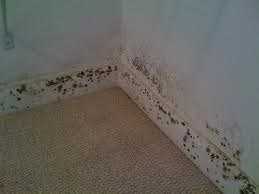Get Rid of Moulds and Moisture in Your House
 Mould is a fungi that not only harm your building but also cause detrimental ailments. Many moulds can be seen while some unseen as they are in air ducts or in other hidden areas. Bathroom, kitchen, cluttered storage areas, areas with poor ventilation are some areas where you can find moulds in your home or apartments. If you are buying a property or apartment in India, flood the building with fresh air and reduce moisture levels that can facilitate mould growth. If you spot a mould attack in your apartment, here are a few steps which can be helpful in order to get rid of them.
Mould is a fungi that not only harm your building but also cause detrimental ailments. Many moulds can be seen while some unseen as they are in air ducts or in other hidden areas. Bathroom, kitchen, cluttered storage areas, areas with poor ventilation are some areas where you can find moulds in your home or apartments. If you are buying a property or apartment in India, flood the building with fresh air and reduce moisture levels that can facilitate mould growth. If you spot a mould attack in your apartment, here are a few steps which can be helpful in order to get rid of them.
Detect a mould growth: One has to first detect the appropriate mould growth in their house. It can be in the form of stains/ discolouration on the walls, window panes, floors, carpets, fabrics or other indoor places. Gradually moulds produce an earthy odour. There are different types of moulds and each can cause different type of allergies and respiratory problems.
Repair the damaged water source: Once the mould is detected, one has to repair the source of water which is causing the mould growth. Also repair the basement, pipes, and roof leaks immediately.
Cleaning: One can clean the mouldy surface with the use of a dish detergent and water. Scrub a little and clean wipe the area. Clear all the useless grub which accumulates dust. Mould can grow on anything which has dust on it likewise, a fabric, wood, paper etc.
Ventilation: One has to always keep their apartment clean and ventilated and make sure that every part of the house is exposed to light. Areas like your kitchen and the bathroom has to be installed with an exhaust fan to keep them dry and away from moisture. If there is an absence of an exhaust fan in these areas, on van open the windows for few hours only.
Sealing: Ensure that your sinks, water equipment hoses and tubs are properly sealed in the right place without entering the walls.
Humidity level: It is always safe to measure the humidity of your house and maintain it to 50% during summer and 30% during winter. One can also use the dehumidifier equipment to maintain the humidity indoors.
Vaccuming: Vacuuming your house regularly will avoid a mould growth and do not over water your plants as this can result in mould growth.
Water proofed: Always ensure that the building is water proofed in order to avoid the rain water from seeping into your building.
Professional help: If the reason for the growth of the mould is a faulty construction, immediately contact a suitable contractor
Personal care; If you have planned to take up the job of mould cleaning make sure you do not expose yourself to the microscopic mould spores as they tend to spread all over the building. Use a protective mask covering your face and wear goggles to cover your eyes. Also do not forget to wear long rubber gloves.
Materials more susceptible for a mould growth: Replace the mattress or any other fabric which has a damp smell. Always wipe the mould with a soapy rag and a dry rag post the cleanup.









